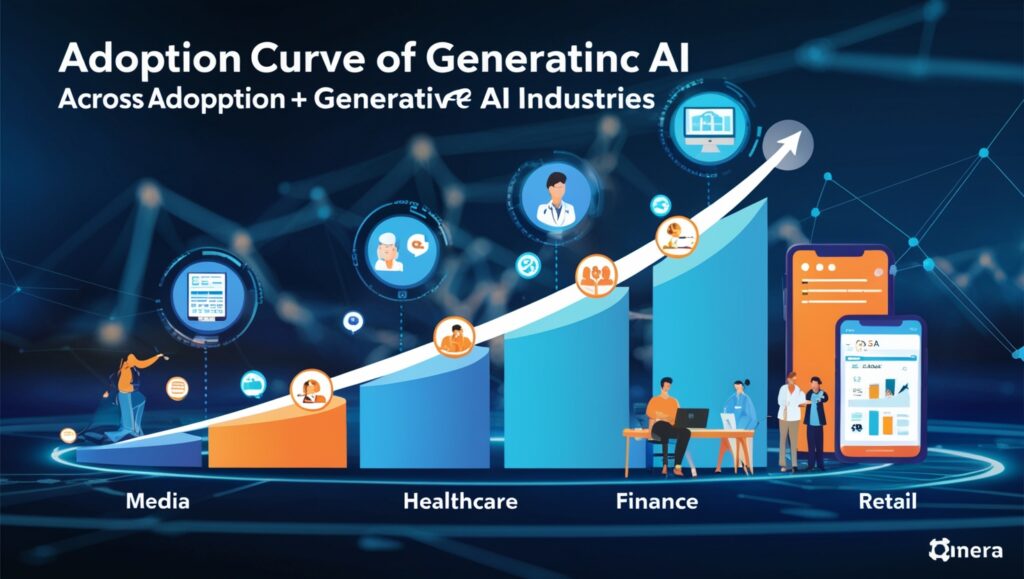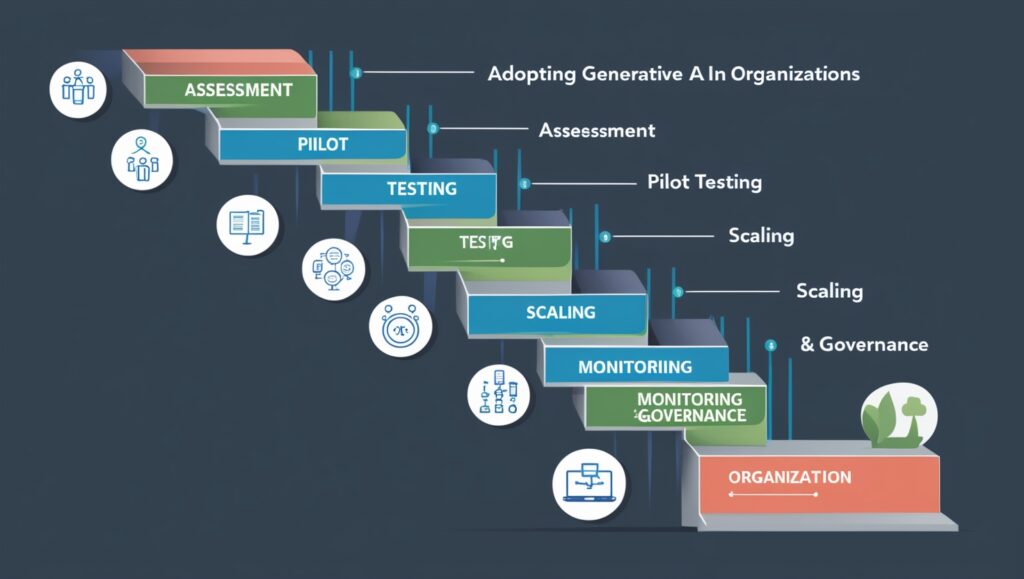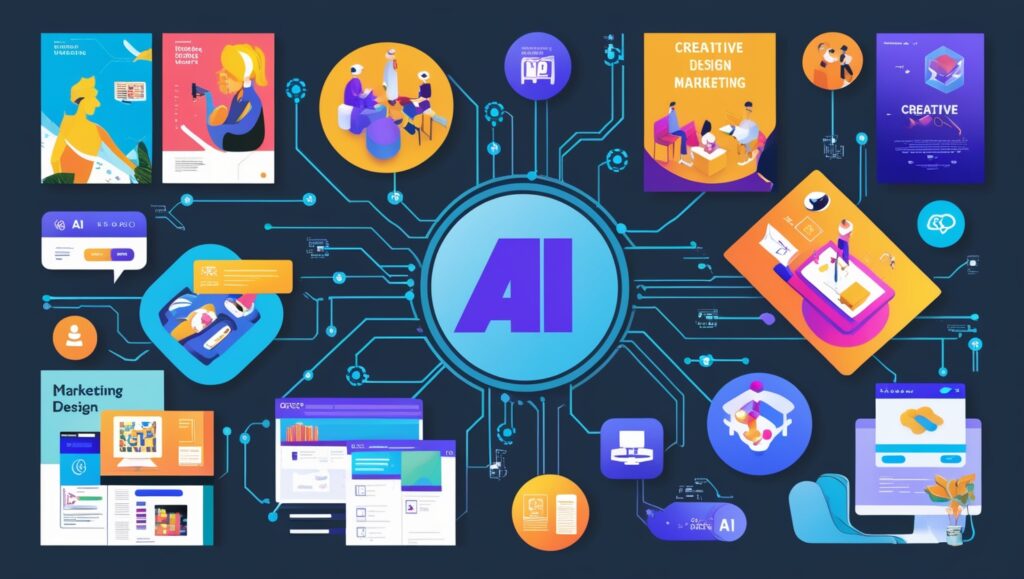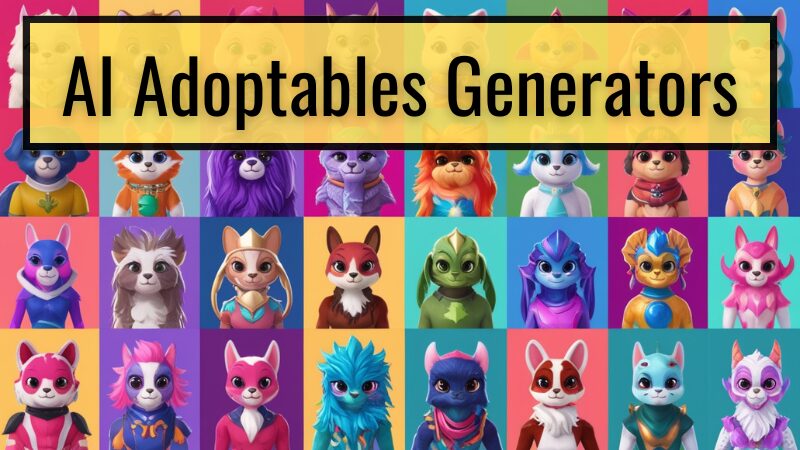AI adoptables generators are gaining attraction in the digital art and collectibles world. These tools use generative AI to create unique, customizable digital assets that users can “adopt” and personalize. As AI continues to evolve, its applications in creative industries are expanding, leading to widespread adoption across various sectors. This guide explores how AI adoptables generators work, their implications, and the broader adoption of generative AI across industries.
What Are AI Adoptables?
AI adoptables refer to digital assets generated by AI, which users can adopt, customize, and use for various purposes. These can include virtual pets, characters, and other digital collectibles. The appeal of AI adoptables lies in their uniqueness and the ability to personalize them to suit individual preferences.
How AI Adoptables Generators Work
AI adoptables generators use machine learning models trained on vast datasets of images, designs, and patterns. These models, often built using advanced generative algorithms like GANs (Generative Adversarial Networks) or transformers, can create new, unique images based on input prompts or predefined parameters. Users can then tweak these creations, making each adoptable distinct.
For instance, platforms like DALL-E 3 and Stable Diffusion XL allow users to input text descriptions, which the AI then interprets to generate detailed, coherent images. These tools are particularly popular for creating unique character designs, including furry adopts, a subset of AI-generated adoptables popular in niche online communities.
Adoption of Generative AI
The Generative AI Adoption Curve

The adoption of generative AI is following a curve similar to other technological innovations. Initially, early adopters like tech companies and creative professionals embraced the technology. As the capabilities of generative AI models expanded, more industries began exploring its potential, leading to widespread adoption.
The adoption curve for generative AI shows a rapid increase in usage across various sectors, with industries like media, entertainment, and design leading the charge. Companies are increasingly integrating generative AI into their workflows to enhance creativity, streamline processes, and create new revenue streams.
Generative AI Adoption Rate and Statistics
A global survey of over 3,000 tech leaders found that 99% of respondents believe generative AI will drive transformational change in their organizations. The adoption rate varies by region, with countries like India, Singapore, and Spain leading in implementation. For example, 81% of respondents in India reported using generative AI, primarily driven by the country’s large services industry and the need for real-time, actionable insights.
The survey also highlighted that industries such as IT, analytics, and data management are at the forefront of generative AI adoption, with significant investments in training models and integrating AI into existing systems.
Generative AI in Organizational Settings
Adopting generative AI in organizational settings involves several challenges, including data quality, security, and regulatory compliance. Organizations must ensure that the data used to train AI models is of high quality, as poor data can lead to inaccurate outputs. Additionally, the security of AI models is a growing concern, with many organizations struggling to balance innovation with data protection and privacy regulations.
Framework for Generative AI Adoption

A structured framework for adopting generative AI can help organizations navigate the complexities of implementation. This framework typically involves the following steps:
- Assessment: Evaluate the potential benefits and risks of generative AI for the organization.
- Pilot Testing: Start with small-scale projects to test the effectiveness of AI models.
- Scaling: Gradually expand the use of generative AI across different functions and departments.
- Monitoring and Governance: Implement robust monitoring systems to track the performance of AI models and ensure compliance with ethical standards.
AI-Generated Furry Adopts and Niche Applications

AI-generated furry adopts are a popular subset of digital collectibles, particularly within the furry community. These adoptables are often created using AI tools that generate unique animal characters with customizable features. Users can adopt these characters, modify their appearance, and use them in various online spaces, from social media profiles to virtual worlds.
Companies Adopting Generative AI
Several companies are leading the way in adopting generative AI across various industries:
- Media and Entertainment: Companies like Disney and Netflix are using generative AI to create content, from movie scripts to personalized viewing experiences.
- Marketing and Advertising: Brands are leveraging AI-generated content for targeted advertising campaigns, creating personalized ads that resonate with individual consumers.
- Retail and E-commerce: Retailers are using AI to generate product descriptions, design clothing, and even create virtual fitting rooms where customers can try on clothes digitally.
Industry-Wide Adoption and Future Prospects
The adoption of generative AI varies across industries, with sectors like finance, healthcare, and manufacturing exploring its potential. For example, in healthcare, AI is being used to generate personalized treatment plans, while in manufacturing, it’s being applied to optimize production processes.
As more industries recognize the value of generative AI, adoption rates are expected to continue rising. However, organizations must address the challenges of data management, security, and ethical considerations to fully realize the benefits of this technology.
Our Final View
The rise of AI adoptables generators and the broader adoption of generative AI signal a new era of creativity and innovation. As more industries explore the potential of AI, the adoption curve will likely steepen, with generative AI becoming an integral part of organizational strategies. Whether you’re an individual looking to adopt a unique digital collectible or a business exploring the potential of AI, understanding the landscape of generative AI is crucial for navigating this rapidly evolving field.
For those interested in creating AI-generated adoptables or exploring generative AI tools, platforms like OpenAI’s DALL-E, Stable Diffusion, and RunwayML’s Gen2 offer powerful capabilities to bring your creative visions to life.
FAQs
What are AI adoptables?
AI adoptables are digital assets created by AI, which users can customize and adopt, such as virtual pets, characters, or collectibles.
How do AI adoptables generators work?
These generators use AI models like GANs or transformers to create unique images based on user input or preset configurations, allowing for personalization of each adoptable.
Which industries are adopting generative AI?
Industries like media, entertainment, IT, and retail are leading the adoption of generative AI for content creation, marketing, and customer experience enhancement.
What tools are commonly used for generating adoptables?
Popular tools include DALL-E 3, Stable Diffusion XL, and RunwayML’s Gen2, which allow users to generate and customize digital art and characters.
What is the adoption curve for generative AI?
The adoption curve shows a growing trend, starting with early tech adopters and expanding to broader industries as the technology matures.
What are AI-generated furry adopts?
These are unique animal characters created by AI, popular in niche communities, where users can adopt and customize their appearance.
What challenges come with adopting generative AI?
Organizations face challenges such as ensuring data quality, protecting AI models from security threats, and complying with ethical and regulatory standards.
